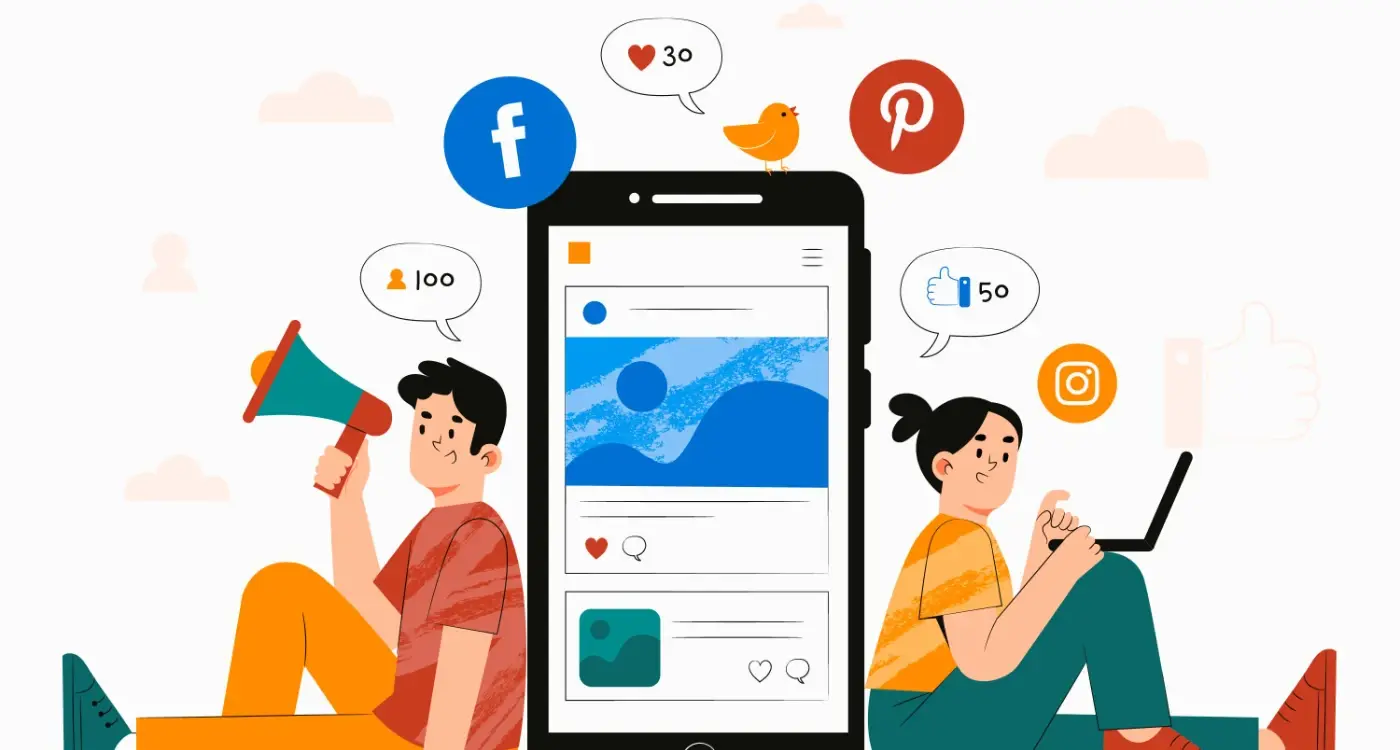How Do I Boost User Retention and Engagement in My App?
Building a successful mobile app isn't just about getting downloads—it's about creating an experience that keeps users coming back day after day. As app developers who've helped countless businesses thrive in the digital space, we know that strong app user retention and engagement are the true measures of success.
The first download is just the beginning—true app success lies in creating experiences so valuable that users can't imagine their daily lives without them.
Think about the apps you use every day. Whether it's checking your favourite social media, tracking your fitness goals, or managing your finances, these apps have become an essential part of your routine. That's exactly what every app developer dreams of achieving—becoming irreplaceable in their users' daily lives.
But here's the challenge: most apps lose 77% of their daily active users within the first three days after installation. It's a stark reality that keeps many app owners awake at night. The good news? There are proven mobile engagement tactics that can help you buck this trend.
In this comprehensive guide, we'll explore practical strategies to boost your app's sticking power. From creating an irresistible onboarding experience to implementing smart personalisation, we'll walk you through everything you need to know about keeping users engaged and coming back for more. Whether you're launching a new app or looking to improve an existing one, these insights will help you build lasting relationships with your users.
Understanding User Behaviour
Before we dive into specific strategies for boosting retention, let's talk about something fundamental: understanding how your users actually interact with your app. It's a bit like being a detective—you need to piece together the clues of what makes your users tick.
The User Journey Map
Think about your favourite coffee shop for a moment. You don't just randomly pop in—there's usually a pattern to when and why you visit. App usage follows similar patterns. Users have specific triggers that prompt them to open your app, particular paths they follow once inside, and certain goals they want to achieve.
Key Behavioural Signals
We've found that successful apps often track these essential user behaviours:- How frequently users open the app—Which features they use most often—Where they spend the most time—At what points they typically close the app—What actions they take before uninstalling
But here's the thing: raw data only tells half the story. The real magic happens when you understand the 'why' behind these behaviours. For instance, if users consistently abandon your app during the payment process, is it because the process is too complicated, or are they just window shopping?
The best way to gather these insights is through a combination of analytics tools and direct user feedback. We often recommend using heat maps to see where users tap, conducting short in-app surveys, and even sitting down for casual chats with your power users. Remember, your users aren't just numbers on a screen—they're real people with real needs, and understanding those needs is your first step toward creating an app they'll want to use again and again.
Creating a Seamless Onboarding Experience
Think of your app's onboarding experience like welcoming someone into your home. You wouldn't immediately bombard them with house rules or give them a lengthy tour of every cupboard, would you? The same principle applies to your app's first-time user experience.
First Impressions Matter
The first few minutes a user spends with your app are crucial for mobile engagement. Just as you might feel overwhelmed walking into a cluttered shop, users can feel lost when faced with complex registration processes or too many features at once. Our experience shows that successful onboarding should focus on delivering immediate value rather than exhaustive tutorials.
Keep It Simple and Progressive
The key to strong app user retention starts with making users feel comfortable. Break down the onboarding into digestible chunks—think of it as a friendly conversation rather than an instruction manual. Show core features first, then gradually introduce more advanced functionality as users become more familiar with your app.
Remember those old video games that taught you how to play while you were actually playing? That's progressive onboarding done right. Consider implementing similar interactive elements that guide users through your app's features naturally, rather than forcing them through a rigid tutorial.
Allow users to skip onboarding steps and return to them later. Not everyone learns the same way, and giving users control over their learning journey can significantly improve their initial experience with your app.
The goal isn't to showcase every feature you've built—it's to help users understand how your app can make their lives better, encouraging them to come back for more.
Building Valuable Features That Keep Users Coming Back
When it comes to keeping users engaged with your app, think of it like creating their favourite coffee shop—a place they want to visit daily because it offers something they truly value. At Glance, we've learned that the most successful apps aren't just packed with features; they're thoughtfully designed with elements that become part of users' daily routines.
Focus on Core Value Proposition
First things first: your app needs to solve a real problem or fulfil a genuine need. Take a fitness app, for instance. Rather than overwhelming users with countless workout options, focus on delivering one aspect brilliantly—perhaps personalised running plans or yoga sequences. When users see consistent value, they're naturally drawn back to your app.
Create Habit-Forming Features
The secret sauce lies in features that encourage regular interaction. Think daily challenges, progress tracking, or achievement systems—much like how video games keep players coming back for daily rewards. We've found that features which tap into users' natural motivations work brilliantly. For a language learning app, this might mean daily five-minute lessons or streak maintenance rewards.
Remember to keep your features fresh and evolving. Just as your favourite TV series keeps you hooked with new episodes, your app should regularly introduce updates and improvements that excite users. But be careful not to change things too drastically—users appreciate familiarity with gradual improvements rather than complete overhauls that force them to relearn everything.
The Power of Push Notifications and In-App Messages
When it comes to app user retention, push notifications and in-app messages are like having a direct line to your users' attention. But as Uncle Ben from Spider-Man wisely taught us, with great power comes great responsibility—and this couldn't be more true for messaging your users.
The difference between a notification that drives engagement and one that drives users away lies not in the technology, but in the timing, relevance, and value it provides to the user
Finding the Sweet Spot in Communication
Through our years of experience, we've seen how properly implemented push notifications can boost mobile engagement tactics significantly. The key is striking the right balance. Too many notifications can feel like that overly chatty friend who won't stop texting, while too few might make users forget your app exists altogether.
Making Messages Matter
We've discovered that successful notifications share three crucial elements: they're timely, relevant, and actionable. Think about it like this—if you're running a fitness app, sending a gentle reminder about an upcoming workout just when your user typically exercises is far more effective than randomly timed messages about protein shakes.
In-app messages work brilliantly for onboarding, feature discovery, and celebrating user milestones. They're like having a friendly guide who appears at just the right moment to help users get the most from your app. Remember to keep messages concise, personalised where possible, and always focused on delivering value rather than just demanding attention.
The beauty of modern mobile engagement tactics is that they allow you to test different approaches and fine-tune your strategy based on how users respond. This way, you can continuously improve your app user retention by learning what truly resonates with your audience.
Making Your App Social and Interactive
Let's face it—humans are social creatures. We love sharing experiences, competing with friends, and feeling part of a community. That's why making your app social and interactive can dramatically boost user engagement and retention.
Building a Community Within Your App
Think about how platforms like Strava make running more exciting by connecting athletes worldwide. Your app can create similar magic by incorporating social features that bring users together. Whether it's allowing users to follow each other, share achievements, or collaborate on tasks, these connections create emotional investments that keep people coming back.
From our experience working with numerous app projects, we've seen that social features can transform a simple utility into a thriving digital community. However, it's crucial to implement these features thoughtfully rather than throwing in every social element possible.
Essential Social Features to Consider
- User profiles and customisable avatars
- Activity feeds showing friends' actions
- In-app messaging or chat functionality
- Achievement sharing capabilities
- Collaborative features or group activities
- Friendly competitions or challenges
- Social media integration options
Remember, social features should enhance your app's core functionality, not overshadow it. For instance, if you're developing a fitness app, focus on features that encourage workout sharing and friendly competitions rather than trying to become a full-fledged social network.
The key is finding the right balance between social engagement and your app's primary purpose. When done correctly, social features can create a sense of belonging that transforms casual users into devoted community members.
Personalisation: The Key to Deep Engagement
Remember the last time a barista remembered your usual coffee order? That warm, special feeling is exactly what personalisation can bring to your app experience. At its core, personalisation is about making each user feel like your app was designed just for them.
Understanding Individual User Needs
Every user who downloads your app has different preferences, habits, and goals. By collecting and analysing user behaviour data, you can create tailored experiences that resonate on a personal level. Think about Netflix's recommendation system—it's not just showing random content; it's carefully curating suggestions based on your viewing history.
Implementing Smart Personalisation
Effective app user retention starts with smart personalisation tactics. Consider adapting your app's interface based on usage patterns, customising content feeds, or even adjusting feature visibility based on user preferences. Mobile engagement tactics could include personalised greetings, custom notifications that align with individual schedules, or content recommendations based on previous interactions.
The beauty of personalisation lies in its subtlety. When done right, users shouldn't even notice it happening—they should simply feel that your app naturally understands and anticipates their needs. It's like having a friend who always knows exactly what you need, when you need it.
Create a 'favourites' or 'preferences' section in your app where users can explicitly tell you what they like. This direct input, combined with behavioural data, creates a powerful foundation for personalisation.
Remember, personalisation isn't about collecting data for the sake of it—it's about using that information thoughtfully to create meaningful, engaging experiences that keep users coming back for more.
Measuring and Analysing User Retention Metrics
Picture this: you've launched your app, and the downloads are rolling in. Exciting, right? But here's the thing—downloads alone don't tell the whole story. What really matters is how many users stick around and actively use your app over time.
Key Metrics That Matter
Let's break down the essential metrics in plain English. First up is your retention rate—simply put, this shows what percentage of users come back to your app after their first visit. Think of it like a friendship—are people interested enough to keep in touch? We typically look at Day 1, Day 7, and Day 30 retention rates to understand how well your app maintains relationships with users over time.
Making Sense of the Numbers
Another crucial metric is your 'churn rate'—the percentage of users who wave goodbye to your app. It's like tracking how many customers stop visiting your favourite local café. Understanding why they leave is just as important as knowing how many leave. Are they dropping off during sign-up? Getting stuck on a particular screen? Or simply losing interest after a few weeks?
The secret sauce lies in combining these metrics with user behaviour analysis. Look at session length (how long people spend in your app), session frequency (how often they visit), and most-used features. These insights are like gold dust—they help you understand what's working and what needs improvement. Remember those old Nokia phones that everyone loved playing Snake on? That's the kind of engaging experience you're aiming for—something that keeps users coming back for more.
Rewarding Loyalty and Active Usage
Think about your favourite coffee shop loyalty card—that feeling of excitement as you get closer to earning your free drink. The same psychology works brilliantly for boosting app user retention and creating meaningful mobile engagement. Let's explore how you can make your users feel valued and motivated to keep coming back.
Creating Meaningful Rewards
The key to a successful rewards programme isn't just throwing points at users—it's about understanding what they truly value. From our experience working with countless apps, we've found that the most effective rewards are those that enhance the core experience of your app. For a fitness app, this might mean unlocking exclusive workout routines, while a productivity app could offer additional storage or premium features.
The most powerful reward is one that makes users feel like they're getting better at what they came to your app to do in the first place
Implementing Smart Reward Mechanics
Consider implementing tiered rewards systems that celebrate different levels of engagement. You might offer daily login streaks, milestone achievements, or special badges for completing specific actions. Remember to make rewards attainable but not too easy—there's a sweet spot that keeps users motivated without feeling frustrated.
We've seen brilliant results when apps combine immediate gratification (like small daily rewards) with longer-term goals (such as monthly achievements). This creates multiple layers of engagement that keep users coming back consistently. Just ensure your rewards system feels natural and adds genuine value rather than coming across as manipulative—nobody likes to feel they're being tricked into using an app!
Optimising App Performance and Reliability
Remember that feeling when a website takes ages to load or crashes mid-task? Frustrating, isn't it? Your app users feel exactly the same way when they encounter performance issues. In fact, studies show that nearly half of users will abandon an app if it takes more than 3 seconds to load – about the same time it takes to blow a bubble with chewing gum!
Speed and Stability: The Foundation of Trust
Think of your app as a brick-and-mortar shop. If customers had to wait outside for minutes before entering, or if the lights kept flickering while they browsed, they'd likely leave and never return. Your app's performance works the same way – it's about creating a smooth, reliable experience that users can count on.
At Glance, we've seen countless apps transform their retention rates by focusing on these fundamental performance aspects: optimising image sizes (no one needs a profile picture the size of a billboard), implementing efficient caching strategies (like keeping your most-used items in your front pocket), and reducing server response times.
Regular Maintenance: The Key to Long-term Success
Just as you wouldn't skip servicing your car, your app needs regular check-ups too. This means monitoring crash reports, testing on different devices and operating systems, and staying on top of platform updates. We recommend setting up automated performance monitoring – think of it as your app's fitness tracker, constantly checking its vital signs.
Remember, even small improvements in loading times or crash rates can have a significant impact on user retention. After all, a reliable app isn't just about technical excellence – it's about showing your users that you value their time and trust.
Conclusion
Throughout this guide, we've explored the multifaceted approach needed to boost app user retention and create meaningful mobile engagement tactics. Like tending to a garden, nurturing user engagement requires constant care, attention to detail, and a deep understanding of what makes your users tick.
Remember that there's no one-size-fits-all solution when it comes to keeping users engaged with your app. Success lies in finding the right balance between various strategies—from creating a smooth onboarding experience to implementing personalisation features that make users feel truly valued. It's rather like cooking a favourite meal; you need just the right mix of ingredients to create something spectacular.
The key takeaway is that user retention isn't a destination but a journey. Your app needs to continuously evolve based on user feedback, changing preferences, and emerging technologies. Focus on building genuine connections with your users, understand their needs, and consistently deliver value through your app's features and functionality.
As you implement these strategies, always keep in mind that every small improvement counts. Whether it's tweaking your push notification strategy or enhancing your app's performance, each step you take brings you closer to building an app that users genuinely want to return to time and time again.
The path to improving user retention might seem challenging, but with dedication, regular analysis of user behaviour, and a commitment to continuous improvement, you can create an app that doesn't just attract users—it keeps them coming back for more. After all, the most successful apps aren't just tools; they become an integral part of their users' daily lives.
Share this
Subscribe To Our Learning Centre
You May Also Like
These Related Guides

How Do I Track Which Social Posts Actually Drive Installs?

How Do I Turn My App Users Into Marketing Champions?



